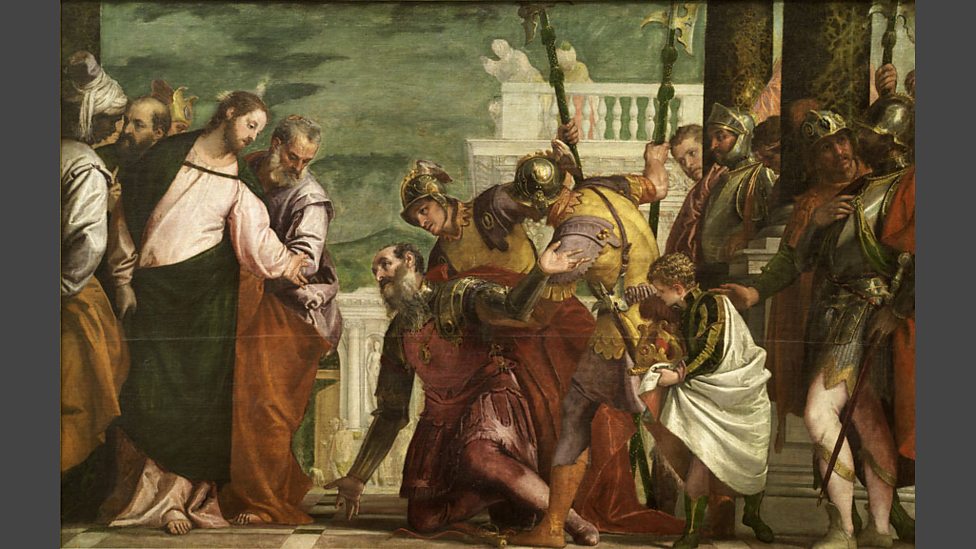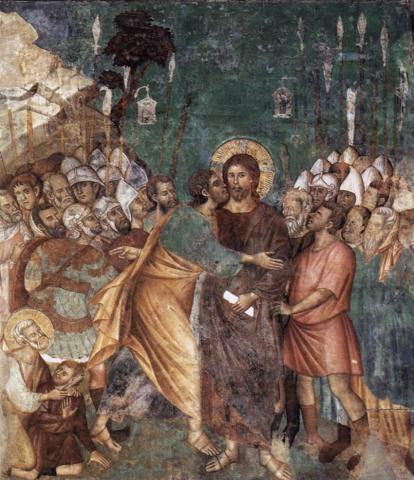
Paolo Veronese, Christ and the Centurion, about 1570
When he entered Capernaum, a centurion came to [Jesus],
appealing to him and saying,
“Lord, my servant is lying at home paralyzed, in terrible distress.”
And he said to him, “I will come and cure him.”
Matthew 8:5-7 (NRSV)
I got an email notice of a scholarly book, soon to be published, called The Roman Army and the New Testament by Christopher Zeichman. There has been a lot written about "empire" in the past decade about "empire" exploration of how religion has often been counter-cultural through the centuries but also has become subsumed by the "principalities and powers" of any given era. The discussion may be more important now when strong-arm leaders, including the Emperor wannabe to the south of us, seem to be on the rise around the world.
Zeichman's book intrigues me, because it looks at those who carried out the directives of the far-flung Roman Empire, including the Palestine in which Jesus lived. There are a number of New Testament passages which mention about Roman military personnel from the beginning of Jesus' life (soldiers ordered to kill Jewish babies) to the end (soldiers guarding his tomb.) The encounter with the centurion, noted above is personal, and powerful.

The Arrest of Jesus Artist Unknown
Here is a synopsis of the book:
Though New Testament scholars have written extensively on the Roman Empire, the topic of the military has been conspicuously neglected, leading many academics to defer to popular wisdom. Against this trend, The Roman Army and the New Testament provides a clear discussion of issues that are often taken for granted: Who served in the military of early Roman Palestine? Why did men join the Roman army, seemingly at odds with their own interests as subject peoples? What roles did soldiers serve beyond combat? How did civilians interact with and perceive soldiers? These questions are answered through careful analysis of ancient literature, inscriptions, papyri, and archaeological findings to paint a detailed portrait of soldier-civilian interactions in early Roman Palestine. Contrary to common assumption, Judaea and Galilee were not crawling with Roman legionaries with a penchant for cruelty. Rather, a diverse mix of men from Palestine and nearby regions served as soldiers in a variety of social roles: infrastructure construction, dispute mediation, bodyguarding officials like tax-collectors, etc. Readers will discover a variety of complex attitudes civilians held toward men of Roman violence throughout the Roman East.
The importance of these historical issues for biblical scholarship is demonstrated through a verse-by-verse commentary on relevant passages that stretches across the entire New Testament, from the Slaughter of the Innocents in Matthew’s nativity to the climactic battle with the Great Beast in Revelation.
My New Testament nerd self is definitely intrigued, although my retirement bank account, not so much. I am appreciative of the thought-provoking research.
Thoughts?

No comments:
Post a Comment